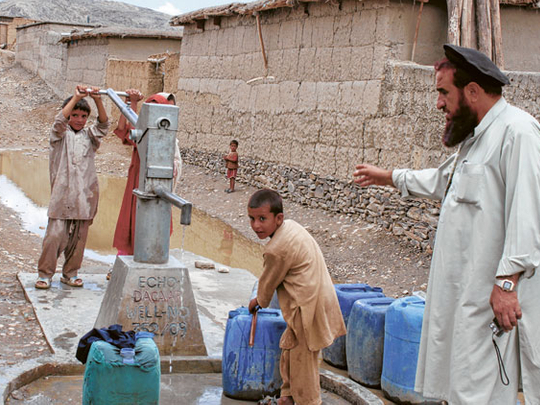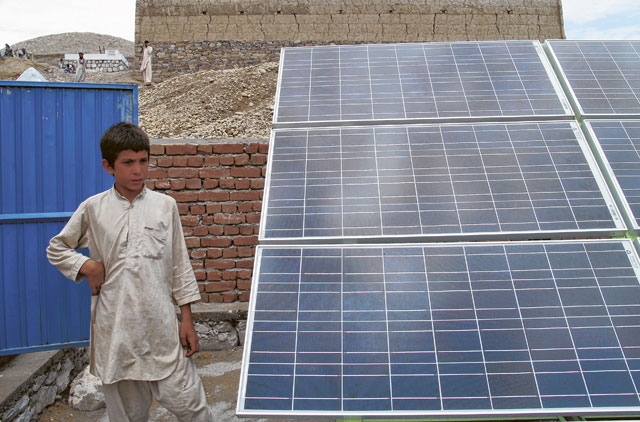
Tangi Returnee Settlements, Nangahar: Across rocky terrain, with no roads in sight and nestled between the mountains of the Nangahar province, lie the Tangi settlements.
The landscape is barren, devoid of trees or any kind of greenery in this "evergreen" province of Afghanistan and there's even little habitation.
The settlement seems camouflaged from afar but it suddenly comes into being once approached.
In 1979 approximately one million Afghans fled their homes from the Soviet Union invasion, hiking across the borders to Pakistan and Iran.
Millions of others followed because of ongoing conflict.
Interactive
Today — according to Amnesty International — Afghans are still the largest single refugee group in the world, and have been for the past 20 years. Five years ago, 50,000 of these Afghan refugees were deported back to Afghanistan from across the border in Pakistan, amid accusations they were linked to militants.
Their homes were under threat from being bulldozed and Afghan-owned shops were under threat of being closed down.
Land in the form of the settlement camps, Tangi 1, 2 and 3 was designated by the UN. Families in the three Tangi settlement camps are made up of between 30 and 40 members.
Each family lives in a single room.
"Before 20, 25, or 26 years [when] they went to Pakistan the population of each family was five or six members. But after 30 years passed in Pakistan when they came back to Afghanistan, all the families have grown to 30 to 35 or 40 members. It's very difficult and all these people have only one room," Haji Amin, Provincial Manager, Dacaar (Danish Committee for Aid to Afghan Refugees) told Gulf News from its Jalalabad office.
Dacaar established a water supply project in the Tangi 2 and 3 settlements in 2008. Initially, the water was brought by tanker, to serve the some 1,370 families living in these settlements.
The area isn't served by much — there is no infrastructure at all. However, there is one saving grace: ground water.
The ground water was accessible, and so Dacaar set up a solar panel ground water project, to provide clean water to the thousands of returnees making the Tangi camps their temporary home.
Gulf News visited the Tangi settlement camps and the water supply projects to see how the water is provided. A pump, powered by solar panels, pumps the ground water up a hill to a reservoir. No chlorination or chemical treatment is required as the water is completely clean and is pumped straight into pipes.
Nothing wasted
The reservoir, atop the hill, uses the earth's natural gravity within the pipes to run the water down into 19 hand pump wells stationed at various locations within the camp.
As a community-run project, a resident technician is designated for 24-hour attendance to the reservoir and its faucets, in case of any problems.
Not a drop is wasted by the returnees, who used to have to walk for several miles to collect unclean water from the nearest river.
The pumps are even easy enough for small children to use.
Dacaar has constructed 40,000 water points, enough to provide water for approximately seven million people living in rural areas.













